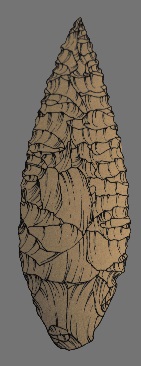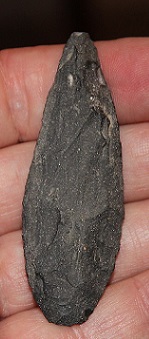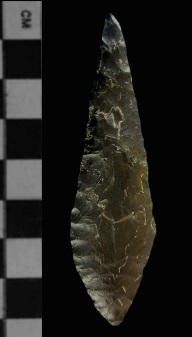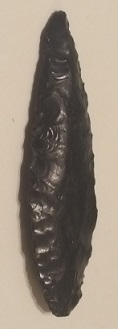Outline is Representative of Size and Shape:

Name Details:
Identified By: David A. Fredrickson
Named For: Excelsior Valley, Lake County, California
Date Identified: 1973
Type Site:
Identified By: David A. Fredrickson
Named For: Excelsior Valley, Lake County, California
Date Identified: 1973
Type Site:
Point Validity:
Valid type
Fredrickson was an anthropologist and professor at Sonoma State University who was responsible for founding the Anthropology Department at SSU. Fredrickson conducted studies and excavations throughout California. This type was named in a professional publication and has many professional references. This is considered a valid type.
Fredrickson was an anthropologist and professor at Sonoma State University who was responsible for founding the Anthropology Department at SSU. Fredrickson conducted studies and excavations throughout California. This type was named in a professional publication and has many professional references. This is considered a valid type.
Excelsior Ovoid
Cluster: Coastal Contracting Stem Cluster Description of Physical Characteristics and Flaking Pattern:
This is a medium to large ovoid contracting stem point with an elliptical cross section. The blade is excurvate, curving in at the tip and back in at the shoulders edge. Serrations are common on this point. The shoulders are weak to absent with a contracting stem. This point commonly has a leaf appearance with no notable difference where the blade meets the hafting region. The base is convex. This type is made using primary percussion flaking then subsequent pressure flaking to finish the blade and stem with a flaking pattern most commonly random, but may range to chevron or oblique.
Size Measurements:
Total Length - 41 to 96 mm, Max Blade Width - 21 to 29 mm, Thickness - 7 to 12 mm
Total Length - 41 to 96 mm, Max Blade Width - 21 to 29 mm, Thickness - 7 to 12 mm
Commonly Utilized Material:
Additional Comments:
Copsey Bi-points are considered to be Excelsior type points which have been reworked into drill or engraving tools (Justice, 2002).
Houx Contracting Stem originally were included in this type (Justice, 2002).
Copsey Bi-points are considered to be Excelsior type points which have been reworked into drill or engraving tools (Justice, 2002).
Houx Contracting Stem originally were included in this type (Justice, 2002).
Distribution: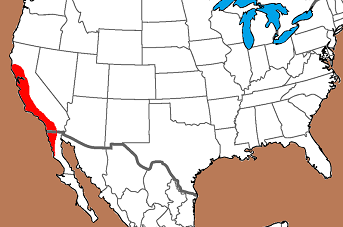

Distribution Comments:
This point is primarily found on the north Coastal Ranges, the San Francisco Bay area, and into the Delta region. San Diego Archaeological Center reports this type into San Diego and northwestern Baja California.
This point is primarily found on the north Coastal Ranges, the San Francisco Bay area, and into the Delta region. San Diego Archaeological Center reports this type into San Diego and northwestern Baja California.
Age / Periods:
Date: 3,000 - 1,500 B.P.
Cultural Period: Late to Transitional Archaic
Glacial Period: Neoglacial to Roman Warm
Culture:
Date: 3,000 - 1,500 B.P.
Cultural Period: Late to Transitional Archaic
Glacial Period: Neoglacial to Roman Warm
Culture:
Age Details:
Other points in this cluster / Related / Associated Points:
Ano Nuevo, Channel Islands Barbed, Copsey, Houx Contracting Stem, Point Sal Barbed, Vandenberg Contracting Stem
Ano Nuevo, Channel Islands Barbed, Copsey, Houx Contracting Stem, Point Sal Barbed, Vandenberg Contracting Stem


